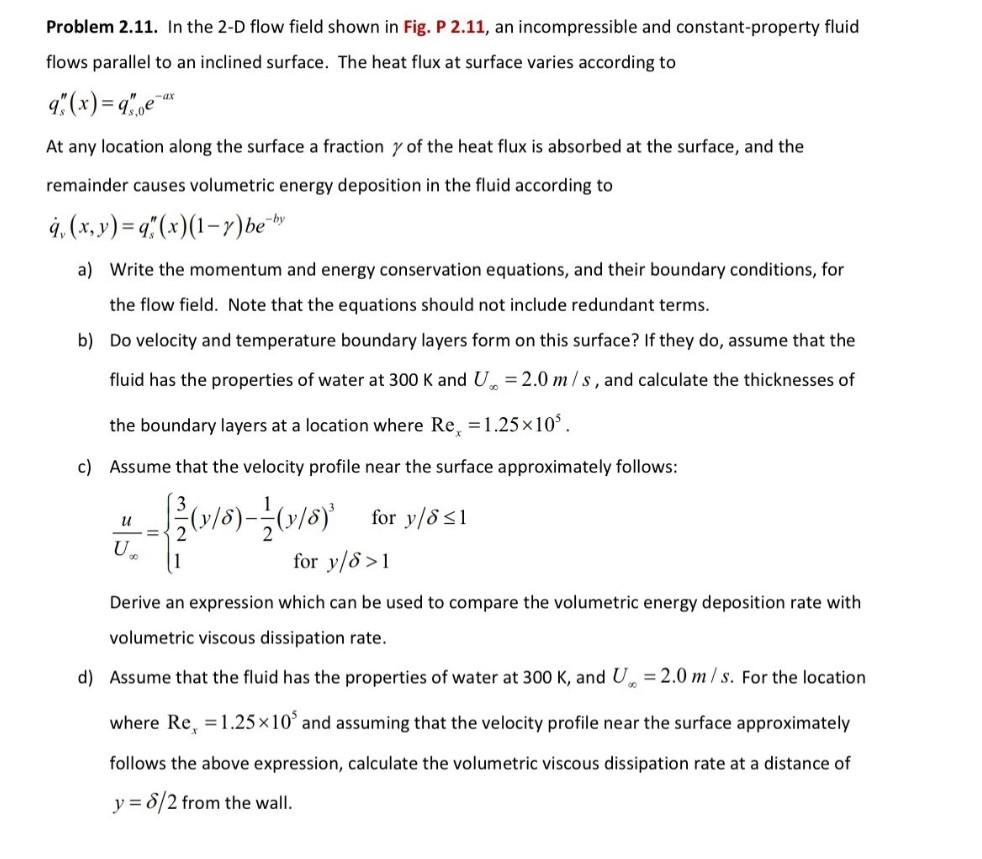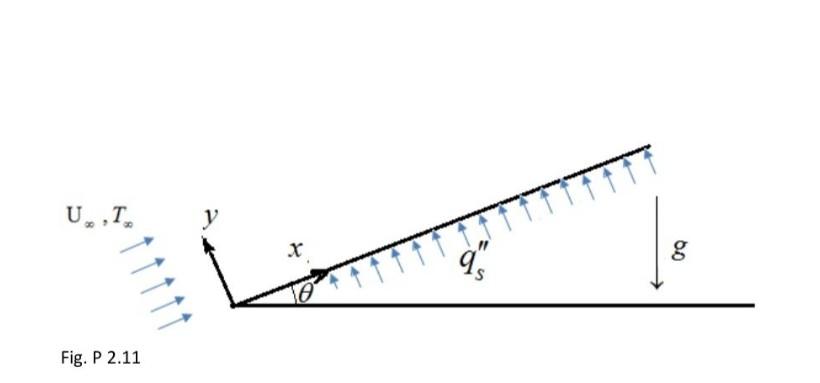Answered step by step
Verified Expert Solution
Question
1 Approved Answer
Problem 2.11. In the 2-D flow field shown in Fig. P 2.11, an incompressible and constant-property fluid flows parallel to an inclined surface. The heat


Problem 2.11. In the 2-D flow field shown in Fig. P 2.11, an incompressible and constant-property fluid flows parallel to an inclined surface. The heat flux at surface varies according to qs(x)=qs,0eax At any location along the surface a fraction of the heat flux is absorbed at the surface, and the remainder causes volumetric energy deposition in the fluid according to qv(x,y)=qs(x)(1)beby a) Write the momentum and energy conservation equations, and their boundary conditions, for the flow field. Note that the equations should not include redundant terms. b) Do velocity and temperature boundary layers form on this surface? If they do, assume that the fluid has the properties of water at 300K and U=2.0m/s, and calculate the thicknesses of the boundary layers at a location where Rex=1.25105. c) Assume that the velocity profile near the surface approximately follows: Uu={23(y/)21(y/)31fory/1fory/>1 Derive an expression which can be used to compare the volumetric energy deposition rate with volumetric viscous dissipation rate. d) Assume that the fluid has the properties of water at 300K, and U=2.0m/s. For the location where Rex=1.25105 and assuming that the velocity profile near the surface approximately follows the above expression, calculate the volumetric viscous dissipation rate at a distance of y=/2 from the wall. Fig. P 2.11
Step by Step Solution
There are 3 Steps involved in it
Step: 1

Get Instant Access to Expert-Tailored Solutions
See step-by-step solutions with expert insights and AI powered tools for academic success
Step: 2

Step: 3

Ace Your Homework with AI
Get the answers you need in no time with our AI-driven, step-by-step assistance
Get Started


